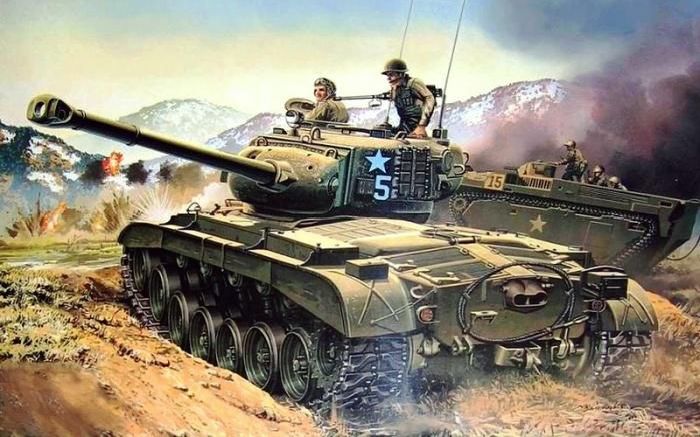|
|
Tank Drawing
|
The three traditional factors determining a tank's capability effectiveness are its firepower, protection, and mobility. Firepower is the ability of a tank's crew to identify, engage, and destroy the enemy. Protection is the tank crew's ability to evade detection, preserve themselves from enemy fire, and retain full vehicle functionality after combat. Mobility includes the ability of the tank to be transported by rail, sea, or air to the operational staging area; from the staging area by road towards the enemy; and tactical movement over the battlefield during combat, including traversing of obstacles and rough terrain.
Tank design is a compromise between its technological and budgetary constraints and its tactical capability requirements. It is not possible to maximise firepower, protection and mobility simultaneously while incorporating the latest technology and retain affordability for sufficient procurement quantity to enter production. For example, in the case of tactical capability requirements, increasing protection by adding armour will result in an increase in weight and therefore decrease in mobility; increasing firepower by installing a larger gun will force the designer team to increase armour, the therefore weight of the tank by retaining same internal volume to ensure crew efficiency during combat. In the case of the Abrams MBT which has good firepower, speed and armour, these advantages are counterbalanced by its engine's notably high fuel consumption, which ultimately reduces its range, and in a larger sense its mobility.
Since the Second World War, the economics of tank production governed by the complexity of manufacture and cost, and the impact of a given tank design on logistics and field maintenance capabilities, have also been accepted as important in determining how many tanks a nation can afford to field in its force structure.
Some tank designs that were fielded in significant numbers, such as Tiger I and M60A2 proved to be too complex or expensive to manufacture, and made unsustainable demands on the logistics services support of the armed forces. The affordability of the design therefore takes precedence over the combat capability requirements. Nowhere was this principle illustrated better than during the Second World War when two Allied designs, the T-34 and the M4 Sherman, although both simple designs which accepted engineering compromises, were used successfully against more sophisticated designs by Germany that were more complex and expensive to produce, and more demanding on overstretched logistics of the Wehrmacht. Given that a tank crew will spend most of its time occupied with maintenance of the vehicle, engineering simplicity has become the primary constraint on tank design since the Second World War despite advances in mechanical, electrical and electronics technologies.
|
|









